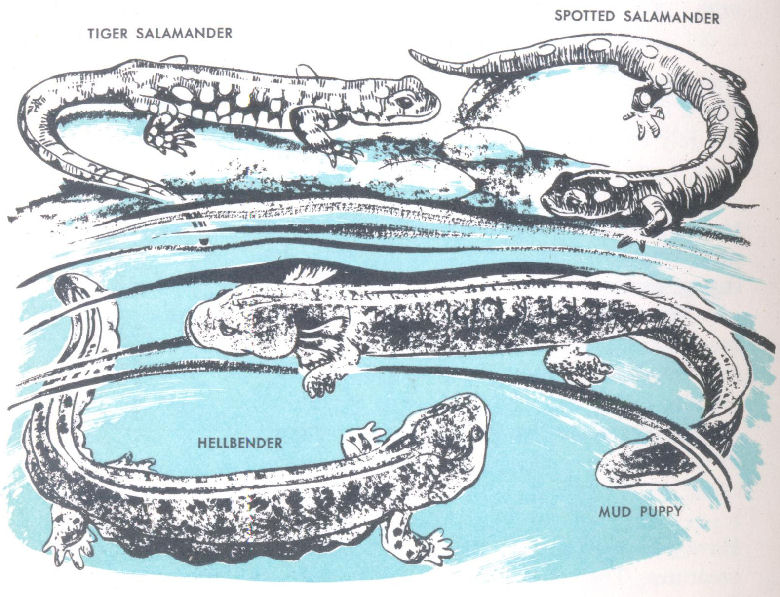124.CAN SALAMANDERS LIVE THROUGH FIRES?
Have you ever seen a salamander? They’re not very pleasant-looking creatures. Their slender bodies, long tails, and sprawling legs make them look like lizards. And probably because they have a smooth, shiny skin that always looks wet, a legend has arisen about them that they can pass through fire without being harmed.
But this is not true at all. Salamanders’ natural home is in the water or in cool, moist places. When they are removed from this kind of environment, they die. Salamanders are amphibians, which means they can live both in water and on land.
Strictly speaking, the only true salamanders are found in Europe. But there are many creatures like the salamander in other parts of the world. Salamanders usually lay their eggs in water. The young have gills, like genuine water animals. When fully grown, the salamander usually develops lungs, loses its gills, and lives on land.
There is a Japanese giant salamander, which grows to be 1.5 meters long, that keeps both gills and lungs. The ugly black hellbender of the eastern United States also keeps both gills and lungs. The black hellbender is a great nuisance for fishermen because it greedily snaps up their bait.
Other salamander-like animals never develop lungs at all, hut spend their entire lifetime as water animals. Among these are the mud puppy, the conga snake of the southeastern United States, and the axolotl of Mexico.
The newts of Europe and America differ from other salamanders in that they return to the water and change again into water animals after living on land for about two and a half years. The best known of the true European salamanders is the spotted salamander. It is about 23 centimeters long and it gives out a poisonous fluid when frightened.



Leave a Reply